On June 18, Paul McCartney celebrated his 75th birthday. With enviable longevity and prodigious musical gifts, he’s amassed a legacy matched by only a tiny handful of artists. Much of that legacy, of course, rests on his role as composer, vocalist, bass player and de facto producer/arranger of the Beatles. Popdose, however, wanted to commemorate this occasion by highlighting his extraordinary post-Beatles career, and so we have chosen the top 75 selections from his extensive solo catalogue, beginning with the self-titled McCartney in 1970 right up through his most recent collection of original material, 2013’s New — and beyond. You’ll find tunes from every point in that decades-long span, not just all the hits but also plenty of lesser-known selections we hope will have you hitting iTunes or Spotify in order to experience a few of the many overlooked treasures Paul McCartney has given us.
75. ”Teddy Boy” (McCartney, 1970)
The McCartney album is a strange conglomeration of pieces that emerged from Macca’s guitar over the course of the late sixties. ”Teddy Boy” is a prime example; written during the Beatles’ visit to India in 1968, the Fabs themselves made several attempts at recording the song, captured with a composite version on Anthology 3. It’s a shuffling, meandering creation that fits perfectly with the similar vibe of Macca’s shaggy solo debut. — Matt Springer
74. ”Heart of the Country” (Ram, 1971)
Appearing on Ram’s second side, this laid-back, acoustic-driven number more strongly recalls the homespun intimacy of McCartney. Domesticity has no more vocal champion in rock than Paul McCartney, and there is no irony at work as he extolls the welcoming virtues of life on the farm, scatting contentedly to himself in the guitar breaks between verses. — Dan Wiencek
73. ”Mrs. Vandebilt” (Band on the Run, 1973)
One of my two personal favorites from Band On The Run (the other being the stunning “Mamunia”) — how do you not love the absolute catchiness, from the moment that propulsive bassline kicks in, to the singalong call-and-response of “ho hey ho” to the downright funny nature of the lyrics? Plus, it’s a mover; it just goes and pulls you along on the ride and it makes side one of Band On The Run sheer gold. No flies on Paul with this one. — Rob Ross
72. ”Alligator” (New, 2013)
“Everybody else busy doin’ better than me.” Jesus, Paul, if there are people doing better than you, none of us has a chance. Described by producer Mark Ronson as “tough” and “brooding,” McCartney’s “Alligator” doesn’t mince words. While its lyrics might seem a little bitter, it’s also brutally honest and definitely one of the standouts on 2013’s New. Ronson’s stellar, signature production is the icing on a whirling musical cake. Featuring harpsichord, soaring bass lines, organ, and an amalgam of dizzying arrangements, any lyrical tension is offset by its playful melody. McCartney admitted “Alligator” was the oldest song included on New, so there’s no telling its origins, but it’s for sure one of his most contemporary tracks of the past few decades. — Allison Johnelle Boron
71. ”FourFiveSeconds” (Non-album single, 2015)
There are no McCartney vocals on this song, but McCartney is all over this one anyways. The most fruitful result of his short-lived writing partnership with Kanye West, McCartney plays all but one of the instruments on this track, and it would not be surprising to find out that McCartney’s presence influenced Rihanna to give possibly the best vocal performance of her career to date. Add the current star power to McCartney’s classic pop influence, and you end up with a Grammy-nominated Top 5 hit, which made Macca the oldest person (72) to ever score a song that high on the charts. — Matthew Bolin
70. ”Promise to You Girl” (Chaos and Creation in the Backyard, 2005)
This song really lives and dies by its beefy, luscious hooks: that opening piano riff and the guitar line that pops up in the bridge. There’s even some recorder-type nonsense where Macca gets his Ian Anderson on. McCartney is at his best when he’s got a few tight brilliant hooks like these to just grind away at, interpolate, drop into random corners of a song and then smile and wave as they drift into the breeze. — Matt Springer
69. ”Early Days” (New, 2013)
As the next song in our countdown (#68, “Only Mama Knows”) recalled Liverpool as a “godforsaken town,” “Early Days” looks back on McCartney’s youth filtered by wistfulness, nostalgia, and just a hint of defensiveness. From 2013’s New album, McCartney has said its genesis came from remembering happy times with John Lennon, visiting record stores and palling around their hometown, “two guitars across their backs.”
It’s also the first time he directly confronts critics, writers, even fans about the Beatles’ story. “Now everybody seems to have their own opinion / of who did this and who did that / But as for me I don’t see how they can remember / when they weren’t where it was at.” He echoes the same sentiments on the song’s chorus: “They can’t take it from me / if they try / I lived through those early days / So many times I had to change that pain to laughter / just to keep from getting crazed,” suggesting he experiences some level of torment from those who nickel-and-dime Lennon’s contributions vs. McCartney’s.
Overall, however, it’s important to also take “Early Days” at face value. It’s always a treat when McCartney revisits Liverpool in song and resurrects old friendships. How lovely to think that he’s still sentimental about those pre-fame days when he was just a kid, “hair slicked back with Vaseline,” hanging out with his best friend, John. — Allison Johnelle Boron
68. ”Only Mama Knows” (Memory Almost Full, 2007)
An all-out rocker, “Only Mama Knows” is an energy-fueled oddball on McCartney’s 2007 album Memory Almost Full. Though some songs that ended up on this album were written and demoed before or during the recording of the folksy, stripped-down Chaos and Creation in the Backyard, Memory Almost Full is its fraternal twin: somewhat alike in progeny … but not really all that similar. Often bypassed for more meaty or mysterious tracks, “Only Mama Knows” probably recalls McCartney’s childhood in Liverpool amid the industrial wasteland and uncertain family life after his mother’s death. It falls in the vein of other McCartney ragers like “Helen Wheels” and “Rock Show” nicely, and provides some levity for an album that can be perceived as somewhat dense. — Allison Johnelle Boron
67. ”New” (New, 2013)
Many Years from Now, the memoir-in-all-but-name written by Paul McCartney and Barry Miles, begins with a telling McCartney quote: ”I feel like the sixties is about to happen. It feels like a period in the future to me, rather than a period in the past.” This intertwining of past and future has cropped up increasingly in McCartney’s songs as he’s gotten older, no more prominently than in ”New,” the title track to his 2013 album. The joke of ”New” is that, on the surface, there’s nothing new about it at all: It’s anchored by a classic Sgt. Pepper quarter-note shuffle, along with some Beatle-y harpsichord and harmonies. The lyric reinforces the past-is-future theme through the prism of a new relationship: ”All my life, I never knew/What I could be, what I could do/Then we were new.” Critics who have wondered about McCartney’s seemingly relentless optimism might want to take a closer listen to this tune — for him, nothing is ever over, and the best is always yet to come. — Dan Wiencek
66. ”Wonderful Christmastime” (Non-album single, 1979)
I’m not here to tell you “Wonderful Christmastime” is a great or even a good Paul McCartney song. With complete candor, I find this track to be irritating, mechanical, and strictly utilitarian. It is, in more ways than any other McCartney-related release, the song that identifies itself as “product” the most to me.
Holiday music makes a lot of money. If you can insert your Christmas track into that very specific freeway of songs that get played year in and year out, you can get paid year in and year out. I feel like that’s the main reason why this exists. I’m sure to hear things like, “Paul did it because The Beatles used to do holiday tunes for the fan club,” or “Paul did it for his kids.” These may be true, but I don’t feel like those intentions play the biggest role in this song.
Call me a “Grinch” — you won’t be the first — but I can’t derive any sense of sincerity from the lyrics. It’s a grab bag of rhymes with vaguely holiday-oriented connotations and much repetition involved. “A choir of children sing their SONG, they practiced all year LONG, ding DONG, ding DONG, ding DONG,” etc.
“Wonderful Christmastime,” recorded around the time of McCartney II, has that same mechanical sound as most of that album, mainly because it was a strictly solo effort recorded by Paul on home gear. In this way, it mirrored McCartney, except the introduction of primitive sequencers and various technological advances gave several of songs a far more robotic quality.
So why is it on the list? Look at the song titles on the rest of this article. When is the last time you’ve heard most of these tunes without actually calling them up for yourself, by whatever means you get your music from? I’ll bet the instances are few, even with the most popular numbers. I’ve no doubt that “My Love” shows up occasionally, or “Let ‘Em In,” or even “My Brave Face.” But on the whole, you’re likely more surprised than not to hear a MCartney song show up over the speakers of Safeway or Shop Rite lately.
But come late-October (hell, how about mid-September?) you will hear “Wonderful Christmastime.” You will hear it consistently. You’ll hear it anywhere and everywhere. So the track may not be an artistic achievement, but it definitely has tapped into a commercial achievement — one that we may never be apart from. — Dw. Dunphy
65. ”Little Willow” (Flaming Pie, 1997)
Another acoustic tune from Flaming Pie, this one was apparently written for a friend’s child to help them get over the death of a parent. The track becomes even more poignant given the fact that McCartney’s wife Linda was fighting what would end up being a losing battle against breast cancer at the time. — Matthew Bolin
64. ”Tug of War” (Tug of War, 1982)
The opening song to the album of the same name, “Tug of War” is a contemplative reflection on the current and future world, written and recorded just as the UK under Thatcher really started to define itself. Looking at things on both a personal and worldwide scale, with individual interactions and relationships interchangeable with international political activity, the complexity and grandeur of the issues covered here are driven home by George Martin’s fantastic orchestral score, which lifts what starts out as a solo acoustic song to grand heights, and then takes over completely for a short coda fitfully hinting at both British and Russian classical influences. — Matthew Bolin
63. ”You Gave Me the Answer” (Venus and Mars, 1975)
Macca returns to the well for another vaudevillian catchy-as-a-cold pop ”trifle.” Which gives us as good an excuse as any to discuss the crux of McCartney’s most frequent criticism. Is a song like this really a ”trifle”? Is there no respect for the artistry and craft required to even execute something that seems so insignificant? Is McCartney the cute, shallow, empty Beatle if he devotes his prodigious talents to such a creation? I don’t know; I’m still humming the chorus. — Matt Springer
62. ”Ballroom Dancing” (Tug of War, 1982)
My second favorite track from 1982’s Tug Of War, released on Paul’s 40th birthday (!) — my favorite is still the Rubber Soul-like “The Pound Is Sinking” — this old-fashioned rollicking piano-driven piece is Paul being both poppy and rockin’. Listen to his vocals — they veer between his standard voice and then recall his Beatles-melodic shout. No one can do it like Paul and here, he hit the mark. — Rob Ross
61. ”Mr. Bellamy” (Memory Almost Full, 2007)
McCartney has made effective use of third-person characters in his songs at least as far back as “Eleanor Rigby” and “Lovely Rita,” and the titular Mr. Bellamy is the latest addition to an already memorable company of spinsters, meter maids, and whatever Jojo and Loretta Martin are supposed to be. Beginning with a volley of mournful horns, a zany, staccato piano introduces Mr. Bellamy, who has evidently perched himself in some high place and now refuses to come down. Slowly the scene fills in: We hear the would-be rescuers (“Steady lads/Easy does it/Don’t frighten him!”), the bystanders and neighbors (“No wonder he’s been feeling strange of late”) and Bellamy himself: “No one to tell me what to do/No one to hold my hand!” It’s vivid, funny and laced with just enough pathos to elevate it above a mere joke. Who hasn’t occasionally felt like telling the world, “I like it up here, without YOU”? — Dan Wiencek
60. ”Once Upon a Long Ago” (All the Best!, 1987)
Macca pauses to consider how the meaningless can turn meaningful and then go right back to meaningless again. We are children again when we create, when we let our guard down and let magic flow from us. “Making up moons in a minor key,” he sings, indulging whimsically in alliteration before asking, “What have those tunes got to do with me?” The answer, of course, is everything. — Rob Smith
59. ”Flaming Pie” (Flaming Pie, 1997)
John Lennon started the tall tale that a man on a “flaming pie” dubbed him and his bandmates “the Beatles — with an ‘a’. ” Years later, Paul McCartney snatched the idea and crafted an album called Flaming Pie. Composed throughout the mid-’90s, it’s possible that McCartney was reminded of the quote given to Liverpool paper Mersey Beat in 1961 during production on The Beatles Anthology, which took place over several years before the album’s release.
Flaming Pie, as an album, is largely considered to be one of McCartney’s best. The titular track is an old-school rocker filled with nonsensical lyrics as McCartney crafts the “man on a flaming pie” character. Though its waters don’t run as deep as others in the collection, it’s, on a surface level, delightful, and apparent that he had a lot of fun throwing it back. Today, McCartney will occasionally take it out and dust it off in concert — much to the delight of diehards everywhere. — Allison Johnelle Boron
58. ”Daytime Nighttime Suffering” (Non-album single, 1979)
A late period Wings b-side that sounds more like an outtake from Ram than anything Wings was regularly putting out at this point in time, “Daytime Nightime Suffering” is a fine blend of major and minor progressions, with hooks upon hooks that chugs along at a steady pace, much like the river the flows throughout the song and serves as its main lyrical metaphor. — Matthew Bolin
57. ”Hi, Hi, Hi” (Non-album single, 1972)
The 1972 banned-by-the-BBC single, this is Paul being sly and naughty (“Look at me; I can still be a bad boy”), especially in light of his then-recent pot-possession bust. Of course, lines like “I’m gonna do you, gonna do you, sweet banana, you never been done” takes McCartney into the most audacious of early ’70’s cock-rock. No matter what, it rocks hard and steady and it’s still one of the best things he did with the first incarnation of Wings. — Rob Ross
56. ”English Tea” (Chaos and Creation in the Backyard, 2005)
Despite John Lennon’s jibes about “Paul’s granny shit,” McCartney has never lost his taste for cornball, faux-vintage musical pastiche, and this blatantly Noel-Cowardesque number is his most appealing such effort in ages. “Very twee/very me,” Paul sings winkingly, knowing how critics hate him for doing this sort of thing and conveying just how little he cares about that. With references to nannies, croquet, fairy cakes and beds of eavesdropping flowers, it does for the Edwardian English garden party what “Penny Lane” did for the Liverpool suburbs: refract it all through a prism into equal parts sarcasm and sincerity, making fun of the scene (and himself) just enough to keep the sentiment from overflowing. — Dan Wiencek
55. ”Souvenir” (Flaming Pie, 1997)
Nobody does melancholy with a smile like Paul McCartney. Though “Souvenir” is often overlooked on what is one of McCartney’s most solid albums (1997’s Flaming Pie), it’s a beautiful, heart-wrenching plea to a struggling listener. McCartney serves as the helper, but considering the tumultuous days in which the album was recorded, when his beloved wife Linda was battling cancer, it seems possible he may have been singing to himself.
The titular “souvenirs” refer to memories and past experiences that seem far gone, almost non-existent. Where have all the good times gone, indeed. McCartney insists he can help recall those times — if he’s asked (“if you want me / tell me now / if I can be of any help / tell me how”). As songs go on Flaming Pie, this one lies somewhere in the middle: it’s not a rocker, not an emotional ballad like “Little Willow,” but one with a lot of substance both melodically and lyrically. — Allison Johnelle Boron
54. ”Arrow Through Me” (Back to the Egg, 1979)
Notwithstanding its proggy, sci-fi cover photo, Back to the Egg is a straightforward rock album, McCartney having decided it was time to leave disco-pop behind and show these punk and New Wave kids how it was done. Its one outlier is the more R&B-inflected ”Arrow Through Me,” sung by Paul in a warm falsetto high above a backing track of bass, synths and horns. With its Synclavier-like Rhodes piano, it’s hard not to hear the specter of Stevie Wonder in this song, foreshadowing their actual in-the-flesh collaboration a few years later on Tug of War. If only Macca had asked Stevie to duet with him on this song, instead of, you know, that other one. — Dan Wiencek
53. ”Fine Line” (Chaos and Creation in the Backyard, 2005)
Another exceptional cut from Chaos and Creation, ”Fine Line” was the album’s first single and opener. This is a record that finds McCartney turning to his trusty piano for many of the strongest instrumental riffs, such as the descending line that entwines with his guitar on the opening bars of this cut. It gives the album an appropriate jolt of energy as it heads forward into a set of low- to mid-tempo numbers. — Matt Springer
52. ”Your Loving Flame” (Driving Rain, 2001)
Whereas other tracks on Driving Rain are a bit more conservative, displaying a romantically gun-shy McCartney, in ”Your Loving Flame,” he finally surrenders to love, finding himself powerless against it (”what am I to do / if I don’t have you?”). It recalls other McCartney powerhouses like ”Maybe I’m Amazed” and ”My Love” in its aggressive piano backbone, but lyrically, it’s a bit more hesitant. Rightfully so, of course; where McCartney was plunging headfirst into the lovepool in the early ’70s, in 2001, he was merely toe-dipping. Not into still waters, mind you, but a whirlpool. Still, it’s one of the more modern-yet-classic McCartney power ballads that’s just downright beautiful. — Allison Johnelle Boron
51. ”Press” (Press to Play, 1986)
The saving grace of perhaps McCartney’s worst solo album, Press to Play, the (almost) title track has such a good tune — especially the very McCartney-esque bridge between the verse and chorus — that it elevates the work above the No Jacket Required arrangement of electronic percussion and synths, thus proving that even when McCartney’s urge for experimental b.s. occasionally gets in the way, his innate sense to provide solid songcraft can help stem the tides. — Matthew Bolin
50. ”Figure of Eight” (Flowers in the Dirt, 1989)
Odd to consider, now that he more or less tours every year, but McCartney’s world tour in 1989 was his first such outing in a decade, and the North American legs of the jaunt his first since Wings Over America in ’76. This is the song with which he opened each show — a new track then, and not exactly a get-up-on-your-feet, light-up-the-stadium number — just another silly love song. “Figure of Eight” was not a McCartney/MacManus co-write, though for the longest time I thought it was, a notion based solely on the lines “Why can’t we travel a continuous line / Make love a reliable covenant all the time,” the second line of which comes out “Makeluvalibelcovent all the time,” a bit of syllable smashing that I was convinced had to be Costello’s doing. It wasn’t; Paul came up with that one on his own. — Rob Smith
49. ”Helen Wheels” (Band on the Run, 1973)
The other balls-out rockin’ favorite of mine — and another of my Apple singles as a kid, played to death and never tired of — this tasty little sprite rocker was the prelude single to the soon-to-come Band on the Run album (to which it was added on the U.S. edition). A catchy ode to the McCartneys’ tour bus that took them around England during the first Wings tours on 1972, it has a great hook, a singalong chorus and I just love it. Far often overlooked, it really was another of Paul’s finest rock & roll moments. — Rob Ross
48. ”Bluebird” (Band on the Run, 1973)
The miracle of the Band on the Run album is that, for all of the complexity exhibited throughout, it tends to sound so effortless. The suite structure of the title track, the barrage of saxophones in “Jet,” the largely improvised exotica of “Mamunia” with, purportedly, Ginger Baker and a small bucket of gravel, all sound less fussy than the (unprinted) credits would have revealed. But for all of the additions, one song calls itself out for its subtractions. As an unofficial sequel to “Blackbird,” “Bluebird” mainly follows the same arrangement structure, being acoustic guitar and vocals. However, the mood is far different. Whereas the former song is stark and hints at solitude and uncertainty, the latter is a paragon of contentment. McCartney is not solo, as would have been the impression received from “Blackbird.” There is specific poignancy to “Bluebird” when he, Linda, and company chime in “We’re the bluebirds.” — Dw. Dunphy
47. ”Every Night” (McCartney, 1970)
Simple. Straightforward. Lovely. “Maybe I’m Amazed” may get the love song praise from McCartney, but “Every Night” deserves it, too. Chiming 12 string acoustic guitars, falsetto background vocals that fall halfway between the Beach Boys and Slim Whitman, and one of McCartney’s best impressions of Ringo’s drumming all make this track a standout in his catalog. Plus, if you can get your hands on his MTV Unplugged: Official Bootleg record, there’s a cracking full-band version. Believe me, mama. — Matthew Bolin
46. ”Friends to Go” (Chaos and Creation in the Backyard, 2005)
It’s my pleasure on this epic list to represent most of the songs from McCartney’s 2005 long player, Chaos and Creation in the Backyard. Teamed with Radiohead and Beck producer Nigel Godrich, McCartney returned to an organic, stripped-down sound where he played most of the instruments and faced the occasional bit of real-life actual criticism from Godrich. This song represents a high point on the album, McCartney’s gentle tribute to his friend George Harrison. From the acoustic guitar strumming to the cheeky lyrics that poke fun at Harrison’s reputation as the ”shy Beatle,” it’s a bittersweet, beautiful moment. — Matt Springer
45. ”Off the Ground” (Off the Ground, 1993)
McCartney’s followup to Flowers in the Dirt, an album good enough to be legitimately considered a comeback, Off the Ground didn’t quite reach its predecessor’s lofty heights, but it’s still a damn fine piece of work, starting with the title tune. A sort of spiritual successor to ”Coming Up,” this jaunty, percussive song captures McCartney’s innate optimism without being saccharine, and kicks the album off on a high note. — Dan Wiencek
44. ”Lonely Road” (Driving Rain, 2001)
Our highest-ranked entry from 2001’s Driving Rain album, “Lonely Road” opens the collection with a series of bass drones, back and forth like a grandfather clock — appropriate for a bassist making something of a comeback after a four-year absence (1999’s Run Devil Run hardly counts, as it’s a collection of covers). The album itself marks a new chapter in McCartney’s life: finding a new love in future ex-wife Heather Mills after Linda’s death.
Though it sounds kinda like a song your dad’s weekend garage band might write, “Lonely Road’s” lyrics set the stage for the album: McCartney has been devastated by the loss of his longtime partner and refuses to ”walk that lonely road” again. Meanwhile, its video features a parade of mid-life crisis clichÁ©s, including a cherry-red convertible that would become one of McCartney’s icons during this period, hot babes, and the birth of his weird barefoot obsession. (Because, supposedly, Heather liked his feet. No joke.) — Allison Johnelle Boron
43. ”No Other Baby” (Run Devil Run, 1999)
Run Devil Run was McCartney’s second ”covers” album, a more full-throated followup to The Russian Album and a set that largely eschews obvious selections for the more personal and offbeat. Run Devil Run was also McCartney’s first project following the death of his wife Linda, and this obscure skiffle number (originally cut in 1957 by Dickie Bishop and the Sidekicks) ended up an unwitting and heartfelt tribute. When you’ve lost the one you love, what else is there to say but ”I don’t want no other baby but you”? — Dan Wiencek
42. ”Pipes of Peace” (Pipes of Peace, 1983)
A sequel in both name and tone to “Tug of War,” “Pipes of Peace” also led off its namesake album. McCartney channels his inner Brian Wilson in this tune, with its focus on keyboards as the driving factor, sonic flourishes, and vocal harmonies (including one of the rare useful inclusions of a boy’s choir) over an ever-rising melodic progress from beginning to end of the verses. — Matthew Bolin
41. ”C Moon” (Non-album single, 1972)
Nobody likes ”C Moon.” I’m not sure if I like ”C Moon,” frankly. Is it damning with faint praise to call a song like this ”infectious”? Is that even a compliment? Malaria is infectious too. Malaria lacks ”C Moon’s” piano riff, however. There may not be an artist whose sincerity and depth are more hotly debated than McCartney, and ”C Moon” is definitely a mark in the ”insincere airhead” column. And maybe it’s cliche to say so, maybe it’s grossly unfair, but seriously: When YOU can knock into a recording studio with your tone-deaf wife and record a track half as catchy as ”C Moon,” then you can rag on Macca. — Matt Springer
40. ”My Love” (Red Rose Speedway, 1973)
One of the most perfect, tear-producing, simply beautiful songs ever produced. Paul’s mastery of the genre reaches an absolute artistic apex with this song that, to this day, can still make me weep in a joyful manner. This is a song that evokes emotion and feeling and it’s flawless. Add to that the late, great Henry McCullough’s sweeping, yearning on-the-one solo. Just magnificent. — Rob Ross
39. ”Calico Skies” (Flaming Pie, 1997)
One of the last pieces McCartney recorded under production by George Martin, this simple track from Flaming Pie — McCartney’s first album after the Beatles’ Anthology project — is just him and an acoustic guitar playing what feels like a traditional folk melody. Throughout this song the key is subtlety, whether it be simply its tune and sparse arrangement, the gentleness in McCartney’s delivery, how with an almost invisible lyrical turn he makes it (in his words) ”a gentle love song that becomes a Sixties protest song,” or the lovely way the song is extended, first by repeating the chorus a second time, and then breaking up the last line the second time through in order to extend the vocal finale just a tad more. — Matthew Bolin
38. ”Say Say Say” (Pipes of Peace, 1983)
One of the fun facts about McCartney’s solo career is that he’s never had an actual solo #1 in the US, technically. His post-Beatles songs that have reached the top of the Billboard charts have either been part of Wings (or “Paul McCartney and Wings”), or as duets with either his wife Linda, Stevie Wonder, or this one with Michael Jackson. “Say Say Say” is the biggest hit of any solo Beatles track, and with six weeks at #1, is only topped by “Hey Jude” and “I Want to Hold Your Hand” as the toppermost of the poppermost among all Beatles-related singles. Catching way more lightning in a bottle than their duet a year earlier on Michael’s album, this track blends the singers together so well, it’s hard at times to tell where Paul’s vocals end and Michael’s begin. With a great horn arrangement by Sir George Martin and a light, funky beat, this could have easily floated away as a light piece of pop-R&B. The choice to place this lightness in the usually dark key of B-flat minor, though, gives added weight to the song, as does the eschewing of a traditional verse-chorus-verse structure for a multi-part verse with separate hooks leading to a bridge that almost turns menacing at the stop of a dime. — Matthew Bolin
37. ”The Back Seat of My Car” (Ram, 1971)
The closing track on 1971’s Ram, ”The Back Seat of My Car” starts out as a sweet ballad — and a gorgeously arranged one at that — before taking a detour into more bouncy territory and then finally rocking its way to a conclusion. McCartney originally presented the song to the Beatles during the Get Back rehearsals, but it obviously never found its way into the band’s catalog. Too bad for them, but pretty great for Paul: it’s a career highlight, to be sure. — Will Harris
36. ”Beautiful Night” (Flaming Pie, 1997)
McCartney’s 1997 album Flaming Pie accomplishes a real rarity: it closes as strong as it opens. Before tapering off into the simple, acoustic “Great Day,” the collection takes one more elaborate, fully orchestrated turn with “Beautiful Night.” Featuring strings arranged by George Martin at Abbey Road Studios, the song features Jeff Lynne and Ringo Starr, the latter of whom shares a call-and-response verse with McCartney at the end. Though it starts simply — piano and vocal — it works itself into a frenzy over the following five minutes. The track also features wife Linda on backing vocals; her contributions to Flaming Pie would be her last before she sadly passed away the following year. (Both Linda and Starr appeared in the visually stunning video for the song in which Paul plays God over his native Liverpool.) — Allison Johnelle Boron
35. ”Junk” (McCartney, 1970)
I’ll say it, if it hasn’t been said: Paul McCartney may be the most talented and successful creator of melodies since Wolfgang Amadeus Mozart. ”Junk” is one of his most exquisite; penned in 1968 and passed over for both The White Album and Abbey Road, its aching beauty shines through most clearly on the barely-there demo found on the Beatles’ Anthology 3. Alternating between mumbling nonsense and humming, the notes float above an absentminded acoustic guitar; decades later, it remains astonishing how casual McCartney can be about his ethereal abilities. — Matt Springer
34. ”The World Tonight” (Flaming Pie, 1997)
Inspired by working with Jeff Lynne on the Beatles Anthology project, McCartney teamed up with Mr. ELO and the two of them came up with this late ’90s gem. That’s just the two of them playing all instruments and singing. Sometimes all McCartney needs is someone to challenge him in order to achieve greatness. Working with Lynne helped McCartney produce some of his best material of the ’90s, and this song became an instant classic. — Scott Malchus
33. ”Silly Love Songs” (Wings at the Speed of Sound, 1976)
As his peers were taking aim at the world, or turning inward, McCartney wrote this funky love song that dominated the AM airwaves in the mid-70s. It’s a song that doesn’t hide its sentimentality. But McCartney seemed to know that with America reeling from Watergate, the Cold War at its height, and an energy crisis on the horizon, people needed things to help them escape and forget, even if it was six minutes. Art isn’t just to educate, but also to entertain, even if it is a silly love song. This may have been an AM staple in the 70s, but it outclasses most of the soft rock from that era. — Scott Malchus
32. ”Let ‘Em In” (Wings at the Speed of Sound, 1976)
I recently saw Tears for Fears performing their song ”Secret World” in concert. There is a break in the song that clearly steals from ”Let Em In,” and singer Roland Orzabal made no bones about it, singing, ”Somebody’s knockin’ at the door / Somebody’s ringing the bell” on top of their thievery. For those who know and love the album the Tears for Fears song comes from (2004’s Everybody Loves a Happy Ending, get it now), it was an amusing acknowledgement. For me, it was an epiphany of sorts. Is ”Let Em In,” which is catchy but not terribly cool, one of those songs that people like, but don’t want to admit that they like? Given that this song and ”Silly Love Songs” are side by side on this list (and back-to-back singles in Macca’s career, interestingly), and about 15 spots below their chart relevance, my gut says yes, that is exactly what is happening here.
If that is the case, I totally get it. The true hook of ”Let Em In,” though, wasn’t the name-checking (”Hey, I have a sister named Susan!”), but the hotly recorded horns, a la ”Good Morning Good Morning” and ”Got to Get You Into My Life.” Only six years after the end of the Beatles, it’s quite possible that Macca was exploiting nostalgia for his former band for the sake of a hit. Not that he needed to do that, but that’s beside the point. Or maybe he was actually feeling nostalgic himself, and that’s okay, too. It’s easy to imagine McCartney, six years removed from the Beatles, thinking of the whirlwind of the Beatles as a simpler time, because in many ways, it was. ”Let Em In” is probably no one’s favorite McCartney composition, but it’s hard to deny its charms. — David Medsker
31. ”So Bad” (Pipes of Peace, 1983)
One of the most underrated things about McCartney (if there can be such a thing) is the flexibility of his voice. Known in his younger days as being able to replicate Little Richard wails, he was also able to bust out on occasion a gorgeous falsetto, though it was rarely called for. One of those few times are on the lead vocals of “So Bad,” McCartney’s U.S. follow-up to “Say Say Say.” A rather straightforward love song, it nevertheless stands out for the vocals, along with its beautiful chord progression, the silky smooth repeated bridge, and some unbelievable bass fills that harken back to McCartney’s work on “Something,” and there’s just something warm and special about this number. — Matthew Bolin
30. ”Hope of Deliverance” (Off the Ground, 1993)
Coming off of the critical and commercial success of Flowers in the Dirt and its worldwide tour, McCartney returned to the studio with his touring band and recorded 1993’s Off the Ground. This first single is a song of hope and peace, recorded in a single take (as all of the tracks from Off the Ground were, according to Wikipedia). Although “Hope of Deliverance” wasn’t a huge hit, its lively Latin beat and gorgeous harmonies have a lasting effect. After one listen, you may spend the rest of the day singing “ba-doobie doobie.” — Scott Malchus
29. ”Nineteen Hundred and Eighty-Five” (Band on the Run, 1973)
The B-side (in the U.S.) of “Band On The Run,” it was also the dramatic final track of the Band on the Run LP. Often overlooked but chilling when discovered, this is another of those magnificent McCartney gems you never heard. — Rob Ross
28. ”We Got Married” (Flowers in the Dirt, 1989)
When McCartney’s 1989 album Flowers in the Dirt was justly acclaimed as a comeback, much of the attention centered on his decision to sit down and write some tracks with Elvis Costello, but a collaboration on the album which didn’t receive nearly as much mention — possibly because the two artists had worked together previously, thereby making it less of a novelty — was David Gilmour’s phenomenal guitar contribution to ”We Got Married.” The lyrics are also notable, as McCartney admitted that the opening lines of the song — ”Going fast, coming soon / We made love in the afternoon / Found a flat, after that / We got married” — were, if not directly inspired by the relationship between John Lennon and his first wife, Cynthia, certainly very reminiscent of the way things were between the couple in the early days. More importantly, though, it’s a song that speaks to any couple that’s endured lean times but come out successfully on the other side: ”It’s just as well / Love was all we ever wanted / It was all / We ever had.” — Will Harris
27. ”Mull of Kintyre” (Non-album single, 1977)
Music critics like to remember 1977 as the year punk started breaking down the walls of the rock establishment, at least in Britain: The Clash, the Damned, the Sex Pistols and the Jam all released their first records that year, and the Pistols in particular seemed to commit some new outrage every other week. A look at the charts, however, tells a different story, with Kenny Rogers, Leo Sayer, ABBA and even Elvis claiming the country’s number-one spot at various intervals. But the biggest song of the year — in fact, the most successful single ever released in Britain at the time — was this plaintive, bagpipe-driven Scottish waltz, a record so anomalous it defies characterization. Is it folk? Easy listening? Some kind of prank? Whatever it was, it shifted two million copies over Christmas in the UK, breaking the record set by ”She Loves You” 14 years earlier. In America, meanwhile, where bagpipes are about as popular as leaf blowers, this song made so little impression on the charts and on radio playlists that many casual McCartney fans have probably never heard it. And what a shame. With its warm, unabashed reverence for the beauty of the Scottish highlands (where McCartney has owned a farm since 1966), ”Mull of Kintyre” is a love song to both nature and home, and if that doesn’t deserve to sell in the millions, I don’t know what does. — Dan Wiencek
26. ”Ever Present Past” (Memory Almost Full, 2007)
A beautiful reflection on getting older that has an air of sadness. The singer questions if everything you do to get ahead is worth it if you miss out on the important things, in particular love. Anyone stuck in the rat race can relate, and they can only pray that they aren’t like the protagonist of “Ever Present Past,” looking back with regret. — Scott Malchus
25. ”Temporary Secretary” (McCartney II, 1980)
You’d be hard-pressed to find a more polarizing song in Paul McCartney’s catalog than “Temporary Secretary.” There are those who downright treasure its robotic, Kraftwerk- and Ian Dury-influenced backbeat that McCartney himself dubbed a “space typewriter.” And there are those who’d rather listen to an internet dial-up tone circa 1998 for three minutes.
The same could be said about the entirety of McCartney II as an album. It has its devotees, but many diehards (yours truly included) have listened to it maybe once and waved it away, sticking to its more commercial singles. Honestly, I’d forgotten about “Temporary Secretary” until Macca began including it in the pre-roll music before his concerts. Maybe it was the adrenaline rush of knowing the show was about to start or the pulse of the titular refrain, but it quickly became one of my favorite McCartney tracks.
It’s no secret that McCartney has always been interested in taking musical risks, and “Temporary Secretary” was ostensibly one of his first and biggest released to the general public. So while it’s not as polished and focused as some of his later experimental material, it’s still a bold statement from a musician who was, at that time, 20-something years into his career and trying to stay ahead of the curve. — Allison Johnelle Boron
24. ”That Day Is Done” (Flowers in the Dirt, 1989)
The closest Paul McCartney ever came to matching the creative spark of his collaboration with John Lennon was when he and Elvis Costello put pens to paper for a series of writing sessions that struck gold for both men. While Costello got the hit single (”Veronica,” his highest-charting song in the U.S.), McCartney arguably bagged the greater artistic success with ”That Day Is Done.” Begun by Costello as a personal reflection on his grandmother’s declining health, McCartney transformed and universalized it by seizing on a stray line of Costello’s lyric and making it both the song’s title and its emotional core. Featuring one the most powerfully raw vocals Paul ever put to tape, ”That Day Is Done” is a searing statement of regret and resignation, and proof that McCartney could — and can — still tackle emotionally challenging material with complete conviction. — Dan Wiencek
23. ”Venus and Mars/Rock Show” (Venus and Mars, 1975)
And so the next operatic piece appears as the opening cut and title of the critical follow-up to Band on the Run, 1975’s Venus and Mars. A perfect soundtrack to the 1970’s, this one kills it. Beginning with the haunting, lilting “Venus and Mars” and morphing into the bombastic “Rock Show,” it’s filled with all the hilariously over-the-top, bloated cliches of the decade of decadence. The lyrics to this day are a hoot (“… in my green metal suit, I’m preparing to shoot up the city / And the ring at the end of my nose makes me look rah-ther pretty …”). It can’t be taken too seriously but musically, it’s top flight and you get to hear the late Jimmy McCullough shine. Plus, it IS the opening of another great, solid McCartney album. — Rob Ross
22. ”This One” (Flowers in the Dirt, 1989)
Another gorgeous McCartney ballad from the second half of 1989’s Flowers in the Dirt, “This One” is a mature, should’ve-been hit that squeaked onto the Billboard charts at #94. A combination of jangly guitars, keyboard washes, and mature, meditative vocals which incorporates natural imagery and wordplay: “This one” becomes “this swan” towards the end of the song, taking the bird first used at the beginning of the chorus and bringing it back around to “fade” the chorus and song “to black,” while linking to the imagery of a rare black swan as a metaphor for the moment missed by McCartney’s narrator. — Matthew Bolin
21. ”Waterfalls” (McCartney II, 1980)
McCartney II was a revelation. The core of the Beatles, the master of the simple yet gorgeous song, took to some New Wave electronics in a completely unexpected way. This song has a haunting, plaintive air and a stripped-down sound. So simple, so lovely. And so influential: it was blatantly ripped off by TLC. Who knew that Paul McCartney would end up having one of the top R&B songs of the 1990s? McCartney had had no trouble filing suits over his rights before, but he probably figured that he would come across as a grumpy old man picking on these young women. If you have only heard the TLC version, click over to YouTube now for this. — Ann Logue
20. ”Wanderlust” (Tug of War, 1982)
As the story goes, Wings were recording London Town in the Virgin Islands and decided, on a break, to go on a boat ride. They boarded a pleasure boat called the Wanderlust and headed out to sea on a gorgeous day. Someone in the Wings camp lit up a spliff/fatty/bomber/number/goof butt/blunt, a little MJ — a marijuana cigarette, for those readers not in the “in crowd” — and the captain got all wackadoodle on our Beatle pal, all uptight, scared of the possibility that the wind would carry aloft the scent of the herb/gunga/ganja/butterflower/weed/cheeba/cheeba-cheeba to the waiting nostrils of the local constabulary. Absurd, yes, but Skipper was the skipper, and the conflict was real, the mellow harshed. History has not recorded how or even whether the standoff was resolved.
Flash forward to the recording of Tug of War, and our Wings-less Beatle friend composes and lays down on tape a magnificent re-telling of the tale, and does so in such a fashion as to turn the anxiety-ridden ship wheel steerer into an antagonist on par with Ahab, Hook, Smollett and the guy who captained the John B. “Light out Wanderlust,” McCartney sings in that ever-ascending chorus, willing the ship to go farther into the ocean, away from the prying noses of authorities, and as the brass section joins the fray, the kerfuffle has turned into something cinematic in scope. From the tale of somewhat stoned aquatic pedestrians being held down by The Man, comes one of our greatest songwriter’s greatest songs. — Rob Smith
19. ”Put It There” (Flowers in the Dirt, 1989)
Most love songs from a parent to a child border on cheesy and saccharine, and McCartney is certainly guilty of writing some dreadful songs in his career. However, “Put It There” ranks as one of his finest accomplishments because it’s restrained, honest and simple. It is also a song about the coded ways fathers speak to their sons in telling them they they love them. “Put it there, if it weighs a ton … as long as you and I are here, put it there.” As someone who grew up with a father who to this day has difficulty saying “I love you,” I learned to read the coded messages he gave that said what I needed to hear. This song is all about that code, which makes is such a powerful tool for the men out there who struggle with those words, too. — Scott Malchus
18. ”Junior’s Farm” (Non-album single, 1974)
Of course. What do you expect me to say? This is my favorite of all Paul’s solo/Wings material. It rocks. Like a fucking schooner. When you’re nine years old and you hear that riff, it gets your blood flowing. And when you pick up a guitar, you want to play that riff. And you can’t help but sing along, trying to approximate Paul’s voice as accurately as possible. The main thing is, Paul never wants people to forget that first and foremost, he loves to rock. Loud and hard. After the pop-ness and various styles explored on the Band on the Run album, he wanted to get back to what he does best — to try and sound fresh and more stripped down. And this was the first works from the second (and probably most successful/well-known) Wings lineup who wanted to deliver, which they did. Catchy, radio-friendly, buoyant — all the right elements. It was obvious after Band on the Run, Paul was back to stay — and on “Junior’s Farm,” he cemented it. — Rob Ross
17. ”Sing the Changes” (Electric Arguments, 2008)
Though the mysterious entity of the Fireman stems back to the early ’90s, it wasn’t until the 2008 album Electric Arguments that the minds behind the experimental, largely instrumental sounds revealed themselves as Paul McCartney and producer Youth. The two met around the time McCartney was finishing Off the Ground and proceeded to record albums with often nonsensical titles that Paul would later admit were pretty much meaningless.
Indeed, the Fireman thrived on improv. On “Sing the Changes,” Electric Arguments’ breakout track, McCartney admitted he really had no vision or idea for the song before laying it down. When you’re Paul McCartney, and you’re also playing every instrument on the album, however, you figure it out.
What resulted is a fan favorite that, despite the Fireman’s penchant for the inaccessible bordering on wacky, is pop at its best. The lyrics preach a return to innocence, experiencing the world with “childlike wonder” and “singing praises” for the simple joy of being alive. Even though the words were probably made up on the spot, they feel genuine and, set to the song’s sunny arrangement, are nothing less than thrilling. — Allison Johnelle Boron
16. ”Here Today” (Tug of War, 1982)
”He’s the kind of guy you’d thump in the mouth,” Paul once said of John Lennon, ”and you’d say, Did that hurt?’ and he’d say No.’ And you knew it hurt.” The shoot-from-the-hip bravado that lent their partnership much of its edge later proved a distinct advantage to Lennon after the group broke up and the two men took to sniping at each other in public (see #13, ”Too Many People,” below). The brief Lennon-McCartney feud was pitifully lopsided, with Lennon savaging McCartney both in song and in print, leaving McCartney wounded and sputtering. That Lennon would later somewhat sheepishly wave much of this away did not alter the fact that Lennon could always go further than McCartney, striking in ways he knew McCartney could not answer.
That imbalance of power has only widened in the years following Lennon’s murder. Since that terrible December day in 1980, McCartney has been in the unfair position of having to defend his reputation against critics who dismissed him as a lightweight entertainer next to the uncompromising, martyred Lennon. At the same time, held in check by an outspoken Yoko Ono and a media ready to pounce, he’s had to avoid taking too much credit for the success of the Lennon-McCartney partnership or being too self-serving in claiming to know what his partner thought and felt — even though he is as qualified to speak on that subject as any person living.
These tensions are what makes his elegy for John Lennon, “Here Today,” so unusual and so poignant. Far from a simple farewell to a friend, the song is a one-sided conversation infused with the deference and posturing that characterized much of their friendship. ”And if I said/I really knew you well, what would your answer be/If you were here today?” begins McCartney, almost flinching in anticipation of a stinging Lennon retort. His imagined reply — ”You’d probably laugh and say that we were worlds apart” — is likely a best-case scenario. Yet as the song continues and his memories unspool — the day they met, the night they cried together — McCartney, his grief overcoming his hesitation, gently but unmistakably stakes his claim as the man who will miss, and remember, John Lennon as no one else can: “And if I said/I really loved you and was glad you came along/And you were here today/For you were in my song.” It’s probably the most authentically revealing song he’s ever written, and it’s no wonder he occasionally has trouble getting through it on stage. It’d be nice to think that, somewhere, a sympathetic tear is being shed along with his. — Dan Wiencek
15. ”Goodnight Tonight” (Non-album single, 1979)
A lot of people moaned and groaned when Paul released this single in March ’79, saying “Macca’s doing disco! This is an outrage!” — on the heels of his multi-million-dollar record deal with Columbia Records in the U.S. This was also the first fruits of another revamped Wings line-up. Nonetheless, while it’s funky, it’s got a deadly bass line; some of Paul’s smoothest vocals to that point; and it’s just fucking catchy. You can’t deny it. It thumps but good. — Rob Ross
14. ”Listen to What the Man Said” (Venus and Mars, 1975)
”Listen to What the Man Said” is what ”We Can Work It Out” might have sounded like if McCartney had written both parts of the song. (For the uninitiated, Paul wrote the verses to ”We Can Work It Out,” while John wrote the chorus.) This time, though, he flips the script; the verses, while not completely dominated by minor chords, carry a fair amount of melancholy, while the chorus is as undeniable and affirming a piece of music as anything single McCartney ever wrote post-Beatles. Even stranger is the arrangement, which starts with two verses, and ends with three choruses, each one bigger and brighter than the one before. Just think about someone doing that today. The most surprising thing about ”Listen to What the Man Said” is that McCartney is the third-best thing about the song, taking a back seat to the wall of vocals in the final choruses and Tom Scott’s soaring soprano sax, not necessarily in that order. — David Medsker
13. ”Too Many People” (Ram, 1971)
In his later years, John Lennon relished cataloguing all the slights his ex-bandmates had lobbed at his girlfriend-turned-wife Yoko Ono, and while some of these may have stemmed from his admitted paranoia, with ”Too Many People,” he was dead on the money. ”Too many people preaching practices/Don’t let them tell you what you wanna be,” sings McCartney, in what he later admitted was a deliberate jab at his white-wearing, bed-in-staging former partner turned exhibitionist for peace. (It didn’t help that the back sleeve for Ram, the album this track leads off, included a photo of what appeared to be two beetles fucking, or if you prefer, one beetle fucking another one.) Lennon answered this veiled sting with the sledgehammer of ”How Do You Sleep?”, proving that when it comes to picking a fight with John Lennon, you probably should think again. Irrespective of the musical feud it started, this song remains a potent and pointed statement on an album otherwise known for nearly unrestrained whimsy — Paul unleashes his throatiest scream on the line “too many hungry people losing weight,” proving he could match his old mate even as he took him to task. — Dan Wiencek
12. ”Another Day” (Non-album single, 1971)
”Another Day” is unthinkable as a solo debut single. The pre-chorus and chorus are a waltz, and the verses are anchored by a pensive vocal and tasteful strumming on an acoustic guitar. Arriving six months after the Beatles announced their breakup (well, six months after Paul announced that he was leaving the band, well after all three of his bandmates had left or announced their intentions to leave), ”Another Day” is the work of a man who knows that, for the moment, he is invincible. This song is sonically light years removed from the Beatles’ most recent singles, and lyrically a sequel of sorts to ”Eleanor Rigby,” which was a whopping four years old at that point (that’s about 15 years on today’s album cycle clock). For nearly any other musician, this is the sound of commercial suicide.
Except it wasn’t. The song went Top 10 in over a dozen countries, and hit #1 in three of them. Is it a good song, or is it good timing? A lot of both, from where we’re standing. — David Medsker
11. ”With a Little Luck” (London Town, 1978)
The Flowers in the Dirt (1989) album was largely developed with a concept in mind — put Paul’s sweetness up against someone with a more aggressive delivery. Thus it was determined that Elvis Costello would make a fine pairing, and I’d say that was largely a fair calculation. That was almost a decade out from the death of John Lennon, the person audiences thought of most when it came time to reckon with Costello.
But let it not be said that the sweet and sour rivalry ended when the Beatles did, and somehow McCartney was attempting to conjure up something far past gone. In the mid-to-late-’70s Lennon was super-critical of some of McCartney’s biggest solo tracks. Specific targets appeared in the forms of “Silly Love Songs” from 1976’s Wings at the Speed of Sound and “With A Little Luck” from 1978’s London Town.
I think “With A Little Luck” has aged a bit better than “Silly Love Songs,” but both mark themselves with a sense of pop-positivity that seems a bit delusional against the backdrop of their times (at least for stateside audiences). Listeners might have felt that, in the face of mid-east tensions, oil embargoes, burgeoning divorce rates for Baby Boomers who suddenly felt the urge to “find themselves,” and the aftermath(s) of Watergate and Vietnam, what was needed to combat President Jimmy Carter’s malaise was more than a little luck.
But escapism is always potent during hard times, and there is something enticing about McCartney’s brand of sleight-of-hand diversion. These songs, while being fluffy and contributing to the narrative that McCartney had been reduced to a nonsensical lump of musical “floopy-buh-dang,” nonetheless provided respite from the radio’s next news break informing all that the inflation rate went up again and everything was going to hell.
Maybe Lennon was right and McCartney’s output at this time was too much sugar and not enough sour. But sometimes you need a break from tough love, and that’s what McCartney provided with songs like “With A Little Luck.” It’s interesting to note just how important that yin-and-yang was with Paul, and how eleven years later he would go out of his way to bring it back again. — Dw. Dunphy
10. ”Uncle Albert/Admiral Halsey” (Ram, 1971)
The first time I was conscious that The Beatles were no more — but that Paul McCartney was one of them — was when this single came out and I was six years old. It’s a song that’s lived with me since and I’ll always have a highly sentimental place for it, but the important thing is perspective. McCartney knows how to write about interesting subject matter — an uncle who’s not in great shape; a nautical journey featuring “butter pie” and that glorious refrain of “hands across the water/heads across the sky” — the skill and precision of this multi-faceted single is one that no one else could have ever attempted. Not even Lennon. Recalling the best bits of “Yellow Submarine,” Paul takes this one several steps further and gives it a visual cartoon life in lyrics. — Rob Ross
9. ”Coming Up” (McCartney II, 1980)
Paul McCartney doesn’t get much coverage when it comes to his videos. You’d think he might. After all, if you extrapolate, A Hard Day’s Night, Help!, Magical Mystery Tour, the performance on the Apple Corps. roof, Give My Regards To Broad Street … all these played a role in the institution of music videos.
And then there’s “Coming Up,” which features Wings in multiple guises performing the song on a bandstand. These were still early days when it came to video-based special effects, but the overall result of various versions of Paul and Linda assembled in one place was fairly convincing. I’m particularly fond of their Ron Mael (Sparks) knockoff on the keys.
The song itself is characteristic of McCartney in this time period. Fairly positive, inherently danceable, not particularly complex. “Coming Up” is a pop song, and unabashedly so. Depending on what your stand on such things is, that either makes the song fun and enjoyable or an irritating earworm, specifically the version where the vocals are slightly sped up. I think I come down on the side of the former, and perhaps shockingly, so did former Beatlemate John Lennon.
“Somebody asked me what I thought of Paul’s last album and I made some remark like I thought he was depressed and sad. But then I realized I hadn’t listened to the whole damn thing. I heard one track — the hit, ‘Coming Up,’ which I thought was a good piece of work. Then I heard something else that sounded like he was depressed.”
— John Lennon, All We Are Saying, 1980
— Dw. Dunphy
8. ”My Brave Face” (Flowers in the Dirt, 1989)
A collaboration between McCartney and Declan MacManus (who you probably know better as Elvis Costello), “My Brave Face” was both the lead single from and the opening track of Macca’s 1989 album Flowers in the Dirt. With its uptempo melody and ear-wormy chorus, it was a return to Beatle-like form for McCartney after the disappointment of his previous effort, Press to Play. In fact, you can trace this song’s lineage directly from the Fab Four: It was the first time since the band’s dissolution that McCartney recorded using his signature Hofner bass.
The song’s optimistic sound belies its desperate, lonely lyrics depicting the darker side of bachelor life post-breakup. Joining forces with Costello was fruitful, if not entirely a match made in heaven for the two oversized personalities.
Nevertheless, it’s the first of four Costello credits on Flowers in the Dirt and set the tone for an album experiencing its long-awaited renaissance this year with a deluxe reissue back in March. And, oh, it also gave us the greatest music video of all time. — Allison Johnelle Boron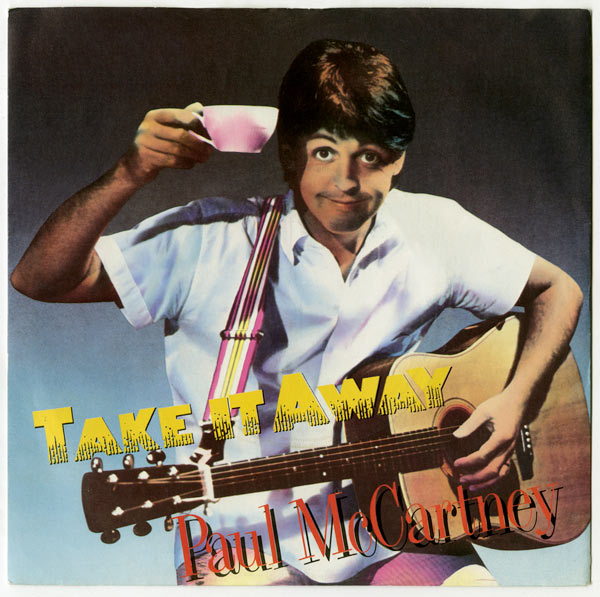 7. ”Take It Away” (Tug of War, 1982)
7. ”Take It Away” (Tug of War, 1982)
Perhaps the most sophisticated McCartney solo hit, the second single from the Tug of War album incorporates a driving bassline, reggae-influenced drumming played by one Richard Starkey, 10cc-esque backing vocals, and a crisp horn arrangement by producer George Martin. The lyrics encompass a number of random scenarios involving lonely drivers, mystery men, and afterparties, all introduced or concluded by the double-meaning of the title track and chorus — the band drives into gear as they’re being told to “take it away,” and the characters which populate the song (as well as the listener) get taken away to somewhere else by the almost romantic qualities of this pop confection. — Matthew Bolin
6. ”No More Lonely Nights” (Give My Regards to Broad Street, 1984)
In the imaginary museum given to the praise and preservation of Paul McCartney ballads, “No More Lonely Nights” has its own wing. It is easily among the loveliest of his many lovely creations, with its soaring chorus and lyrics that turn the smallest promises made with love into the grandest gestures. “I will do what I feel to be right,” he sings simply at verse’s end, with no affectation, no pretension, and yet when it hits the heart, it’s transformed into a mighty declaration. At the end, as the music folds over the voice, we hear David Gilmour’s outro guitar solo, and one can be forgiven for wishing it would never end, just go on and on, like love, like a declaration of love made in younger days, stretched out across the decades, made stronger over time, while still maintaining that core, that kernel of loveliness. The damn thing is 33 years old, and it still feels like that, every time I hear it. — Rob Smith
5. ”Live and Let Die” (Live and Let Die, 1973)
For people Of A Certain Age, ”Live and Let Die” is simply the title song from a Roger Moore Bond flick. Those who discovered it later can be forgiven for allowing their minds to race with the pretend quasi-profundity of its lyrics, especially as accompanied by a bombastic score arranged by Sir George Martin. It’s only a couple lines —”When you were young and your heart/Was an open book …” Traveling down the airwaves of a classic rock station to an impressionable high schooler, it sounded like McCartney and Wings had torn a hole in space-time and thrown a grenade through it. For Macca, it was little more than a couple hours’ work for a couple millons’ pay. — Matt Springer
4. ”Band on the Run” (Band on the Run, 1973)
What can be said that hasn’t been said of this three-movement masterpiece? It’s one of Paul’s most endearing and beloved solo tracks; it’s the title cut of his most-successful post-Beatles album; and it’s simply a fantastic and memorable-for-all-time, singalong ever committed to tape and vinyl. Everything about this works RIGHT; from the “Stuck inside these four walls” segment to the “If I ever get out of here” rockin’ interlude to the dramatic/explosive “main storyline” of the Jailor Man and Sailor Sam. As he’d done on “Uncle Albert/Admiral Halsey” with its many segments all looping back into one another, McCartney manages to create a musical movie in three parts here. And God knows, he did it so well. — Rob Ross
3. ”Let Me Roll It” (Band on the Run, 1973)
In December 1972, Wings’ catchy single ”Hi, Hi, Hi” (see above) was banned from radio by the BBC for its supposedly sexual lyrics and because, well, it says ”We’re gonna get high, high, high” right there in the chorus. McCartney’s next foray into drug-lingo-inspired songcraft, ”Let Me Roll It,” was veiled enough not to draw the ire of censors — and a heavy, walloping slab of great rock and roll into the bargain. Unlike the more fractured, fanciful tales presented in ”Band on the Run” and ”Jet,” ”Let Me Roll It” is as direct and unsubtle as the slashing guitar riffs that propel the song along. You gave me something, I understand, you gave me loving in the palm of my hand — it sounds like it took about as long to write as it does to sing, and that spontaneity is what makes it so timeless. Assumed at the time to be a pastiche of John Lennon’s reverb-heavy productions, it’s arguably the least-dated track on Band on the Run, and the song has fittingly lived on as a permanent fixture of McCartney’s live set. — Dan Wiencek
2. ”Maybe I’m Amazed” (McCartney, 1970; Wings Over America, 1976)
Amaze, amazing, amazed. However you phrase it, it is a word that has been mortally abused over the past decade. I’ve said that if everything is amazing — from sunsets to sandwiches to spit — then nothing is amazing. That’s because the key descriptor within the word has been lost over time. Literally, to be amazed is to be awash in dizzying confoundment, disoriented, as if lost in a maze. But if we’re talking about Paul McCartney, then at least one song still fits that criterion.
It will come as no surprise to anyone that “Maybe I’m Amazed” is one of my top picks, and even less a surprise that I favor the live version from Wings Over America. The original, from the McCartney album, is a bit more ragged around the fringe, in part because the record in in almost every respect a solo album. Given the means to build a home studio, and multitrack capabilities he didn’t have for most of the time he served with his former band, McCartney sounded like a man with something to prove. All of that forward thrust is heard on that rendition, but the song needed a kinder touch.
It also needed breathing room. That’s what Paul got onstage with his band Wings. For all the complaints, criticism, and crap he took over the years for Wings’ tablespoon of schmaltz, there was little debate leveled when they hit the stage. Even today, approaching 75, with a bit more leather in the lung, McCartney brings the A-game consistently. This live recording is from a particularly golden era, however.
That space and (ever so) slightly slower tempo allowed the sentiment behind the song to reveal itself fully. By this time, every love song was between him and Linda. I think that’s why so many rejected the Wings years, not because of her specifically, but because she pulled him away from the world, away from them. There is an irrationality to the angst that is explained only because the idol has moved on from the idolators. The fault cannot be with the song.
There’s such a sincerity to how Paul puts this across. One can easily derive their own conjecture. He found the one person in the world who loved him not because he was a Beatle, but in spite of it. It was a reward that John seemingly found but Ringo had to wait for. George — in an almost cruelly widescreen way — had to first get past Patti, Clapton, and God himself before he got to Olivia. But Paul had it, and he was shouting it from rooftops all over the world. — Dw. Dunphy
1. ”Jet” (Band on the Run, 1973)
A tour de force of early 70s rock, “Jet” is perhaps the most stadium-ready rave up of McCartney’s career. Coming less than a year after Bowie’s Ziggy Stardust, “Jet” gives a nod to “Suffragette City” not just via the repeated references to a “lady suffragette” in the song, but also with a similar fuzzed-out horn arrangement that bleeds into the guitars and powers the song forward. The thing that really puts “Jet” over the top, though, as a literal work of art is the surreal word painting McCartney decides to provide via his lyrics. Instead of telling a story or writing a straight ahead (silly) love song, McCartney chooses words here for their musicality: The very word “jet” sounds like different things depending on how it’s presented. It can be a random noise, like when it’s shouted at the beginning. It can sound like he’s saying “yet” or “yes” — as in “And Jet, I thought the major was a lady suffragette.” Or it can sound like “ya” (i.e. “you”) — as in “Ah mater, want Jet to always love me.” In the same line, “Ah mater” sounds like it could be “A major” or “I made her,” leading to differing interpretive possibilities. In using a limited vocabulary while presenting words in ways where what he’s singing can be heard as more than one thing (perhaps at once), McCartney actually deconstructs the very concept of a pop-rock song. Plus, with the catchy as hell wordless backing vocals, the Moog wash substituting for a traditional bass, and the proto-glam guitar fills punctuating the bridge, it’s also just a damn great tune. — Matthew Bolin


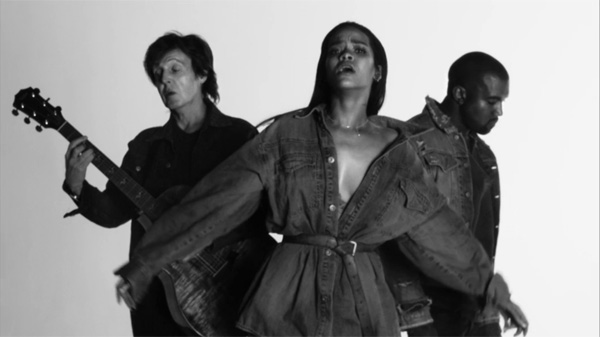
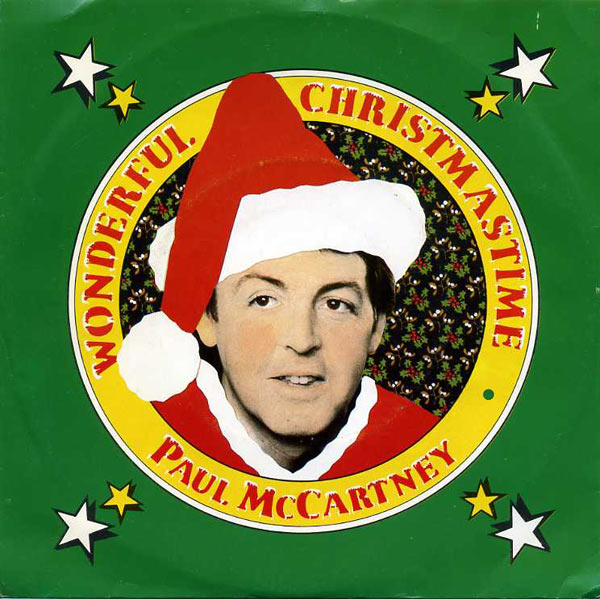
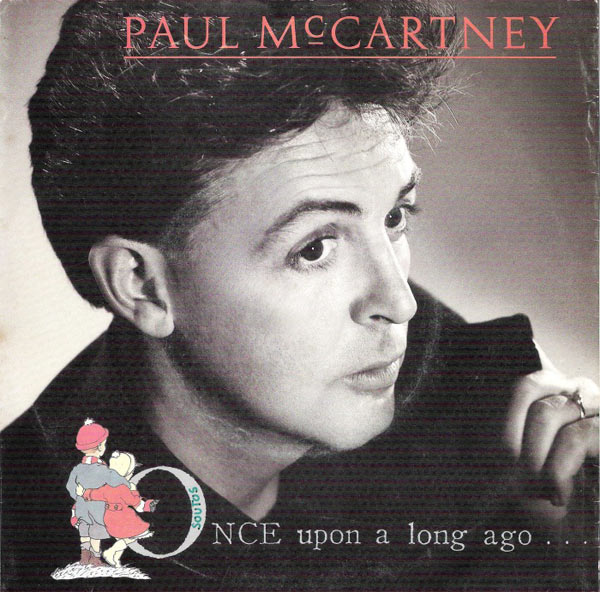
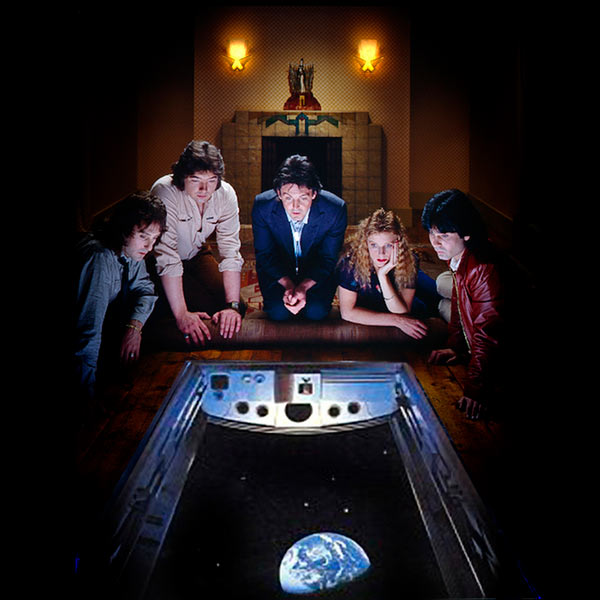
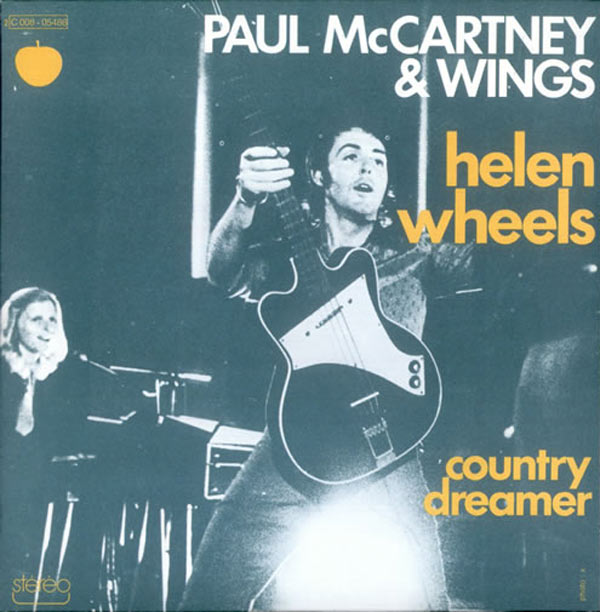
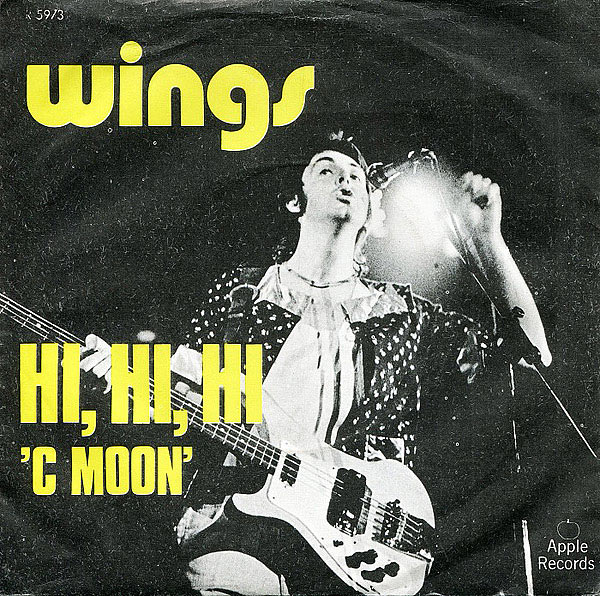
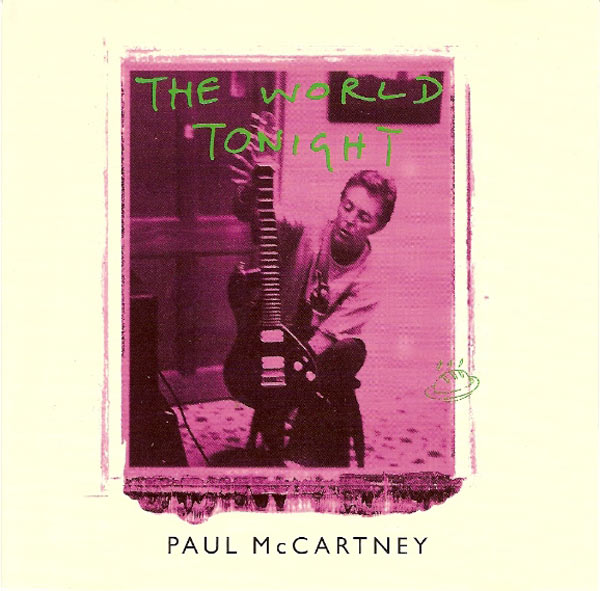
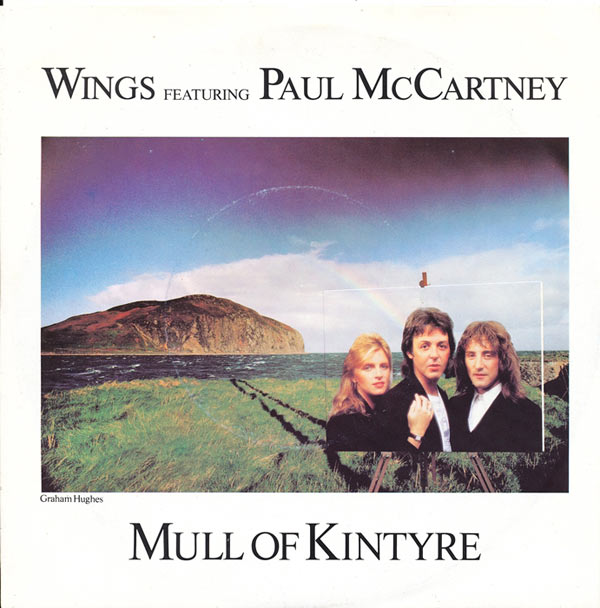
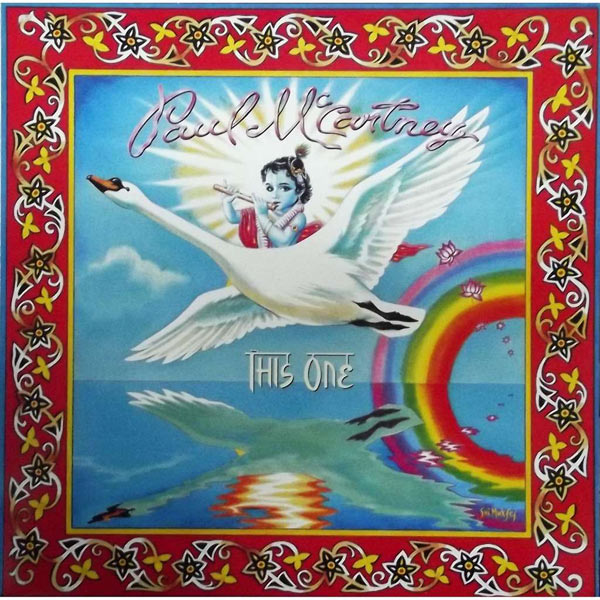
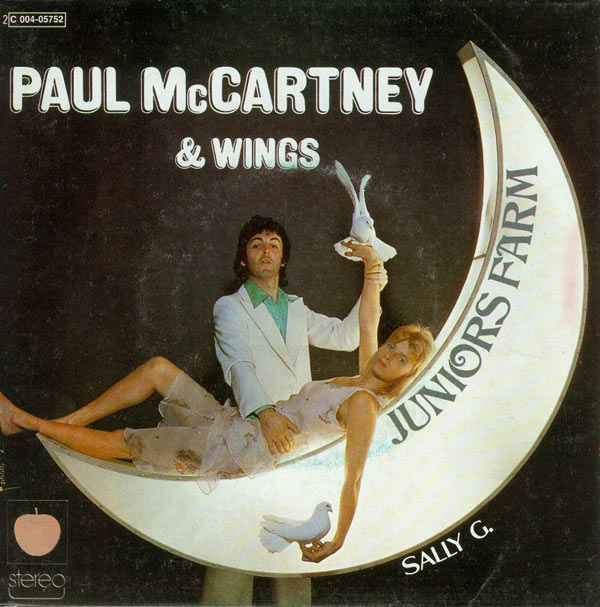
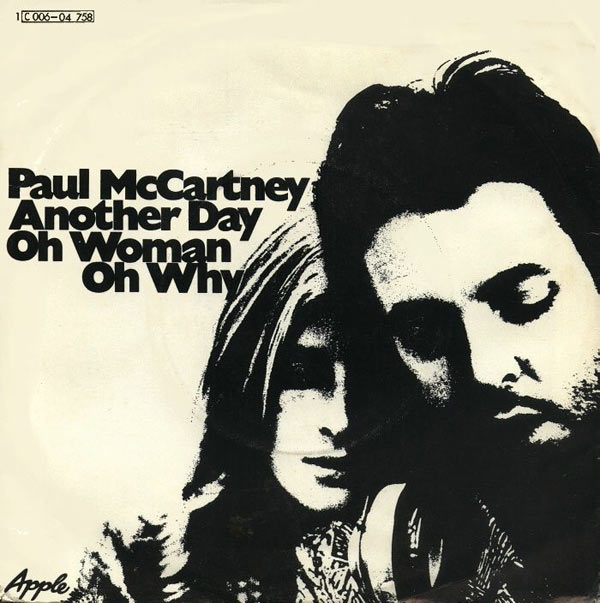




Comments